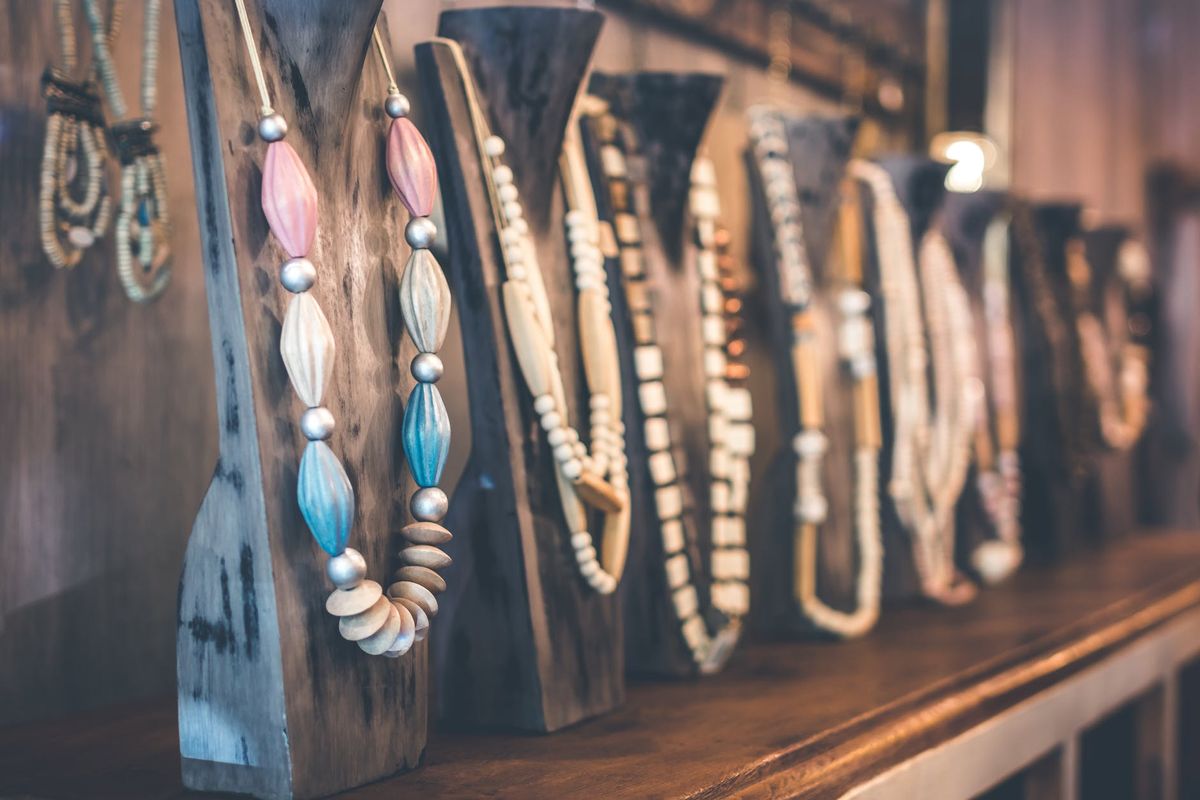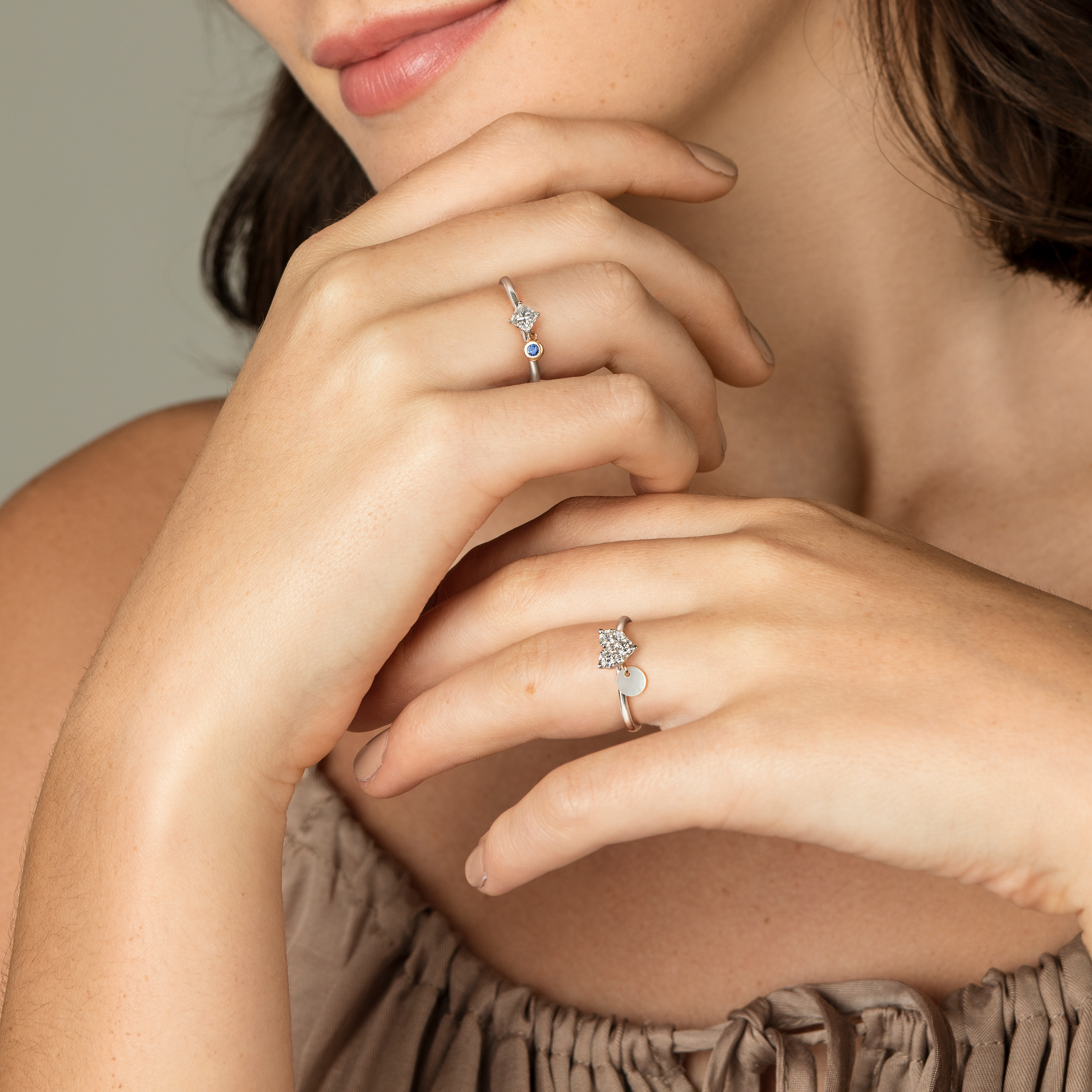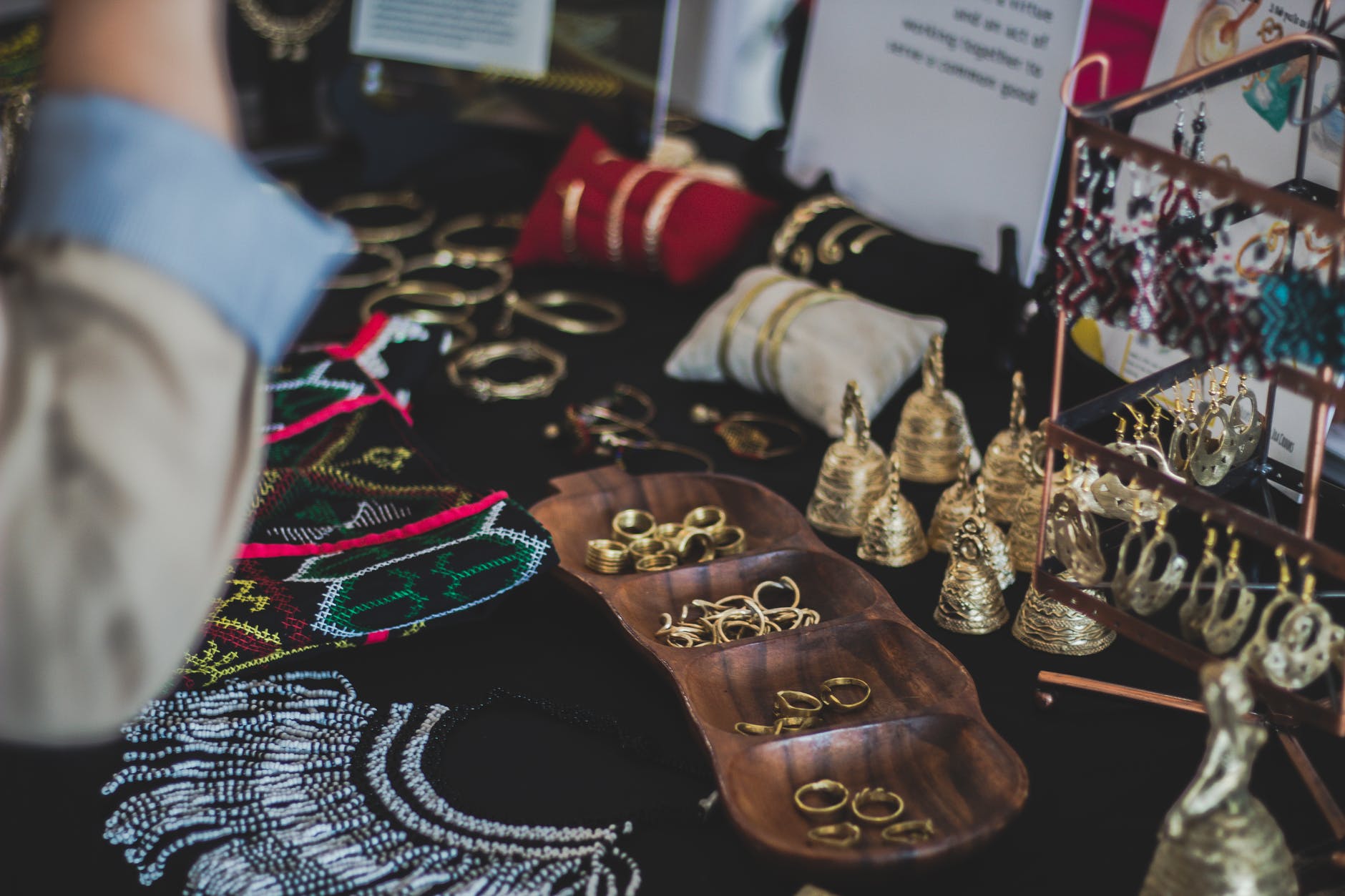A look at fast fashion within the jewelry industry

A few minutes every morning is all you need.
Stay up to date on the world's Headlines and Human Stories. It's fun, it's factual, it's fluff-free.
Fast fashion is an approach to creating and marketing trendy but cheap clothes to consumers. And over the past 25 years or so, it’s become a major facet of everyday style.
Although this may sound like a good thing, several problems are rampant within the industry. While these inexpensive articles of clothing allow more people access to the latest trends, corporate practices of labor exploitation and environmental disruption are a hefty price to pay. Retailers like Zara, H&M, Forever 21 and Primark have received significant backlash for their fast fashion practices prompting consumers to also shift more toward pre-loved clothing.
One avenue of fast fashion that hasn’t been as prominent in the public eye is the jewelry industry. But principles of fast fashion can also apply to jewelry retailers who produce pieces at a high turnover rate using cheap materials and questionable sources of labor.
To get a better idea of what fast fashion means in the jewelry space, TMS spoke with Melody Yau, the associate general manager of Lovemark Diamond. Lovemark Diamond is an online jewelry retailer that uses natural diamonds that are “socially and environmentally ethical, conflict-free, and mined and shipped responsibly in compliance with the United Nations Resolutions.”
Recently, Lovemark introduced their Charm Rings, with each charm representing “an energy that you can manifest and nurture within yourself.” Regarding this collection launch, TMS delves further into jewelry material and manufacturing sourcing with Yau to learn what it means to be an ethical jewelry producer.
Redefining fast fashion within the jewelry space

Like fast fashion clothing, the current issues associated with unethical and nonsustainable jewelry include complex supply chains, overconsumption, economic growth, environmental concerns and social concerns. However, the rules of fast fashion must shift when discussing jewelry instead of textiles.
In textiles, fast fashion is mass-produced, and the tags on your clothes at least tell you where they were made. However, traceability in the jewelry industry is far more challenging to come by.
Many metals and minerals used within the jewelry industry come from the poorest regions in the world and pass through multiple hands in the production chain, most of which are hard to trace. Being an informed consumer is the first step to shopping sustainably, and it is not an easy feat when purchasing jewelry. Plus, generally speaking, mining itself has a negative environmental impact.
While luxury items are typically part of most jewelry collections, many casual pieces can be considered fast fashion and are not worn as frequently. Just like with fast fashion, we may wear cheap jewelry pieces only a handful of times before tossing them out.
Once these pieces end up in a landfill, they won’t break down easily and can pollute the air and water. And, whether or not the jewelry you’re buying is artificially created or uses naturally occurring metals and minerals, there is no guarantee it’s ethically made.
“We think ‘fast-jewelry’ can be defined by quantity over quality, including infringement on copyright so that it can be mass-produced,” explains Yau. “We can see the appeal – it’s a more affordable and accessible way of accessorizing. However, this comes at an environmental cost and potentially labor concerns as well.”
To avoid this issue, Yau explains that Lovemark keeps things in-house and focuses on quality and long-term appeal. “All our jewelry is thoughtfully designed and meticulously produced in-house, that will last a lifetime,” she says. “We’d like to think every piece holds significant meaning and memory to our customers […]
“We think as consumers become more knowledgeable and aware [of] how products/goods are made, more emphasis will be placed on the quality of the things they buy and own rather than how many things. Fast fashion will probably always have its appeal. We understand why it exists but also think it may eventually become less mainstream as consumers understand the true costs behind that price tag,” says Yau.
How is the jewelry industry affected by fast fashion practices?

The jewelry industry at large is affected by the widespread unethical practices used by certain successful corporations and brands. However, the industry has seen some progress as these issues come to light. “I think our industry as a whole have come a long way since the infamous ‘Blood Diamond’ movie and can continue to do better,” asserts Yau.
Yau continues: “Various parties have implemented stringent checks and balances – most notably the Kimberly Process, which regulates the mining and trading of diamond roughs to eliminate conflict diamonds. Most countries’ government and customs authorities have enacted legislations to reinforce this.
“Others include De Beers Group and their Sightholders, who are only authorised to cut and distribute De Beers’ diamonds to companies like us if they meet strict ethical requirements, down to the additional anti-money laundering screens that financial institutions impose on jewellery companies.
“Most raw materials (since they are so costly) are also often reused and rarely ever go to waste. It is common practice within the industry to recycle gemstones and precious metals and remake them into beautiful new pieces.
“I think as an industry, not only do we need to more openly address the social, labour, and environmental concerns, but more importantly, what we’re doing about them to continually push for higher standards. And give people a peace of mind when they buy and wear natural diamond jewellery,” says Yau.
The social responsibility of jewelry retailers

Do jewelry retailers have a social responsibility when it comes to their standards and practices? Over the past few years, the conversation surrounding sustainability has become increasingly abuzz concerning jewelry.
Transparency has become a point of contention within the industry, at odds with the concept of sustainability. As Rachel Garrahan explains in an article for Vogue Magazine: “Stretching back thousands of years, the gem trade is one of the oldest in the world and it has always been famously opaque. A single stone is likely to pass through many hands and many countries, from miner to cutter to polisher to an entire network of dealers before it lands in the hands of the jeweller.”
Essentially, it’s difficult to ensure that a product has been created sustainably and in line with the ethics of free trade if the supply chain has too many untraceable individual links. So what does the jewelry industry owe consumers? And what does that responsibility look like?
“Nowadays as consumers become more aware of ethical and environmental issues, and increasingly demand transparency, we in turn scrutinise our supply chain the same way,” explains Yau.
“We are very fortunate that we have our own sourcing and manufacturing capabilities, which allows us to have a very clear audit of where and how our pieces are sourced and fashioned,” Yau continues. “For example, we only source diamonds from our trusted suppliers who comply with and are certified by the Kimberly Process and also from De Beers Group Sightholders to ensure full visibility of where the loose stones came from. However, we are aware not a lot of other companies are in the position to have that visibility or control.
“Whilst the question is very easy to agree with, in reality, it is also very difficult to manifest. Supply chains have become more and more convoluted and opaque due to the nature of a global supply chain and the rise of sub-suppliers. I’m certain this is not just the case for jewellery but across other industries and sectors as well. Because of this, transparency [has] become more difficult, but [it’s] also all the reasons why it’s more important.
One of the things we’re trying to do is to set a framework that allows full disclosure of where and how our jewellery has come about – from where the diamonds are mined to how the piece is handcrafted and finally on the consumer’s hands when he/she is trying it on. This is not a novel concept as other jewellery brands have attempted the same, but we want to do it in a way that is easily understood and trusted by consumers for it to be truly transparent.
“We think the key is in educating and explaining what buzzwords like ‘ethically and environmentally sourced’ mean, what the processes behind them are actually like. We’re still working on this and can’t say we already have the solution, but will continue to strive towards it to the best of our abilities.”
Knowing that there are better alternatives to jewelry retailers who keep their consumers in the dark is assuring. By searching for sustainable and humane retailers, we can make more conscious purchases.
To be a more informed consumer, you can ask how your jeweler sources their stones and metals, and you can even search out retailers who specialize in recycled or ethically-sourced jewelry. These products can be a little more expensive than typical fast-fashion jewelry, but they’re becoming more popular across the jewelry market – and for good reason.
Have a tip or story? Get in touch with our reporters at tips@themilsource.com




Comments ()